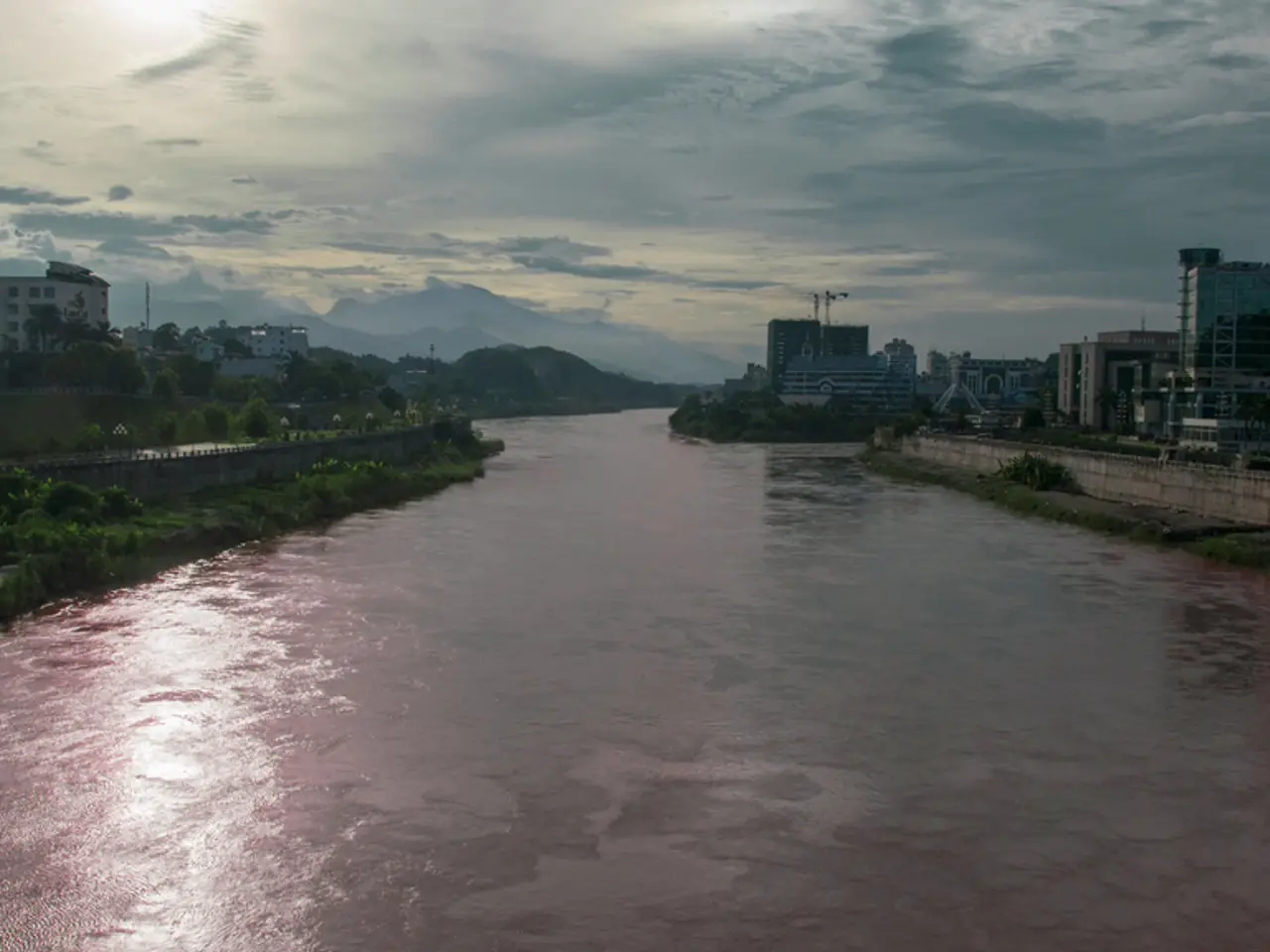Ethiopia initiates construction of Africa's largest hydropower dam amidst significant tension with Egypt.
In a significant development, Ethiopia has officially inaugurated Africa's largest hydroelectric dam, the Grand Ethiopian Renaissance Dam (GERD), marking a milestone in the country's ambitions for economic development. The dam's reservoir, spanning an area larger than Greater London, has been filled in phases since 2020.
The GERD, located on a tributary of the River Nile, is expected to eventually generate 5,150 MW of power, a significant boost for Ethiopia's energy sector. However, the dam has sparked controversy, particularly with Egypt and Sudan, who have expressed concerns over potential impacts on their water supplies and interests.
Egypt, which depends on the Nile for about 90% of its fresh water, fears the GERD could restrict its water supply during periods of drought and lead to the construction of other upstream dams. Similarly, Sudan could also benefit from better flood management and access to cheap energy from the GERD, but shares Egypt's concerns about the dam's operation.
Negotiations over the GERD have produced no agreement for years, and relations between Ethiopia and its downstream neighbours have deteriorated in the last year. The idea of strategic rival Egypt dictating not only Nile water usage but access to the Red Sea, is clearly unacceptable to Addis Ababa.
Ethiopia's government claims that the dam's reservoir will provide a steady water supply for hydropower and irrigation downstream while limiting floods and drought. The central bank of Ethiopia provided 91% of the project's funding, while 9% was financed by Ethiopians through bond sales and gifts, without any foreign assistance.
The GERD has proven a source of national unity in Ethiopia, particularly in the face of external pressure. On the other hand, Egypt's position on the GERD received support from former US President Donald Trump.
Landlocked Ethiopia's plan to gain access to the sea via its old adversaries Eritrea or Somalia has seen Egypt throw its weight behind Asmara and Mogadishu, adding another layer of complexity to the regional dynamics.
Despite the ongoing disputes, no major disruptions to downstream flow have been recorded due to the dam so far, partly due to favorable rainfall and cautious filling of the reservoir during wet seasons over a five-year period. Rural Ethiopians may have to wait a little longer to benefit from the extra power, as only around half of them are connected to the national grid.
As the GERD continues to operate, it remains to be seen how the tensions between Ethiopia, Egypt, and Sudan will be resolved, and whether the dam will bring the promised benefits to all parties involved.








